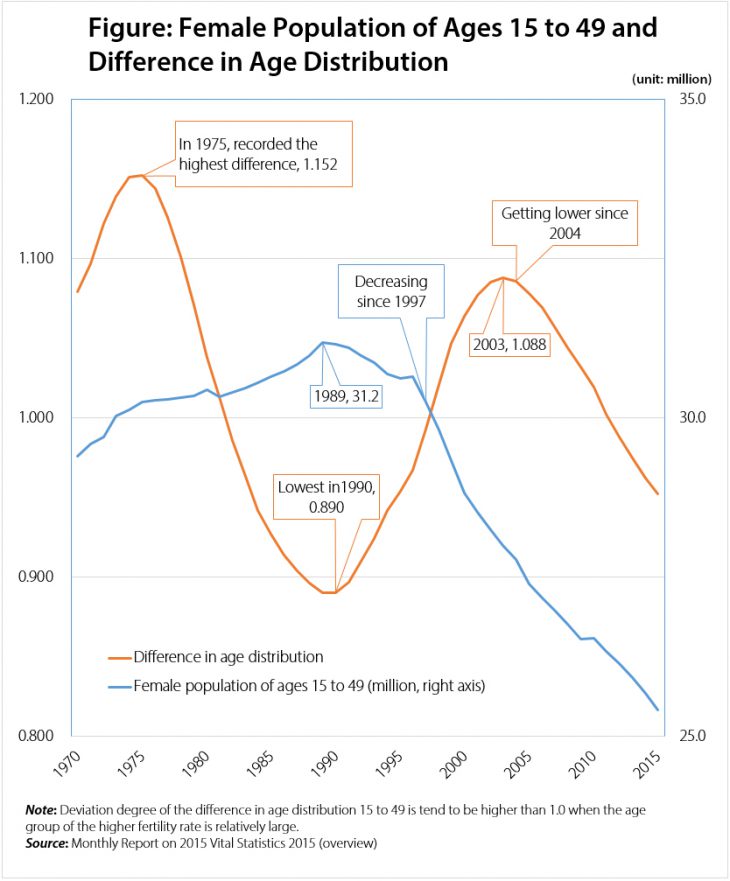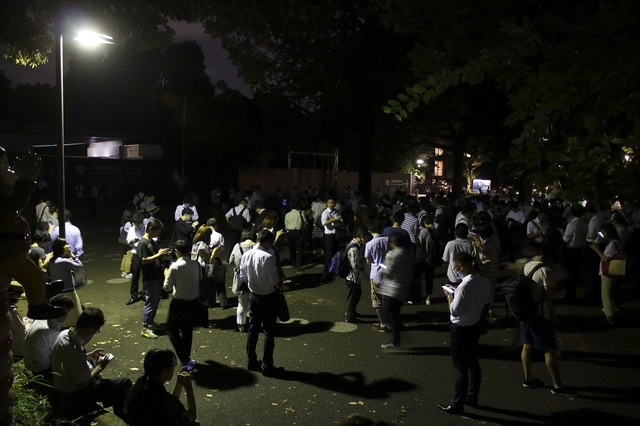What is needed to counter the falling birthrate? Bold funding investments are urgent ―Salaries for nursery school teachers and tuition fee support
< Key Points >
- Increasing the birthrate is not likely to substantially increase the number of births.
- The stagnation in the 1990s and 2000s is a failure of historical proportions.
- Improve student loan payments and the income-pegged repayment model

komamura Kohei, Professor, Keio University
The Population Section at the Ministry of Health, Labour and Welfare have started to discuss the new population projections. The new population projections will likely be announced in the first half of next year.
Population projections are based on the census and carried out at intervals of roughly five years to estimate the population over the next fifty years (one hundred years in case of consultation projections). The results form the basis for pension financing and social security policies, including medical and nursing care, but the socio-economic impact is also significant as the data are consulted for local government policy and for future planning at corporations.
As made evident by the 2015 census, the population of Japan has started to shrink due to a long-term decline in the number of births. In recent years, the number of births has been consistently declining since the peak at 2.09 million in 1973 and these days the figure hovers around one million. The previous population projections predicted that the number of births would shrink to approximately half a million by the 2040s. To avoid a precipitous population decrease, it is essential to guarantee the number of births.
When discussing measures to counter the falling birthrate, the focus is on the total fertility rate (the number of children born to a woman during her lifetime). However, the total fertility rate that is generally used is the sum of the birthrates for women in every age bracket between 15 and 49 in a particular year, which does not determine the number of births.
For example, if the total fertility rate for 2015 is 1.46, it is an improvement of approximately 2.8% over the previous year when the rate was 1.42. However, the number of births in 2015 was 1.06 million, which is only two thousand more births (0.2%) than the lowest ever number of 1.04 million births recorded in 2014.
The Ministry of Health, Labour and Welfare offers a fascinating explanation of this point in the Monthly Report on 2015 Vital Statistics 2015 (overview). It is possible to disaggregate the number of female population of ages 15 to 49, the total fertility rate, and the difference in age distribution 15 to 49. Increases in the total fertility rate are not linked to increases in the number of births if the female population is declining, or if the age distribution of women in the 15 to 49 brackets is skewed toward the age brackets with low birthrates.
The population of women aged 15 to 49 shrank by 1% between 2014 and 2015, and since there was also an increase in the age brackets with low birthrates, the number of births hardly increased at all even though the total fertility rate rose. The two factors that will influence the number of births in the future, i.e., the female population and age distribution, are projected to move in a negative direction from now on.
If we look back, there were approximately 4.8 million more women aged between 15 and 49 in 1975 than there are now. The age distribution was also at its peak. In 1975, the number of births totaled 1.9 million as this was the period when many baby boomers gave birth. Since then the birthrates have continued to shrink, and as of 1997 the number of women has also been decreasing. In recent years, the age distribution peaked in 2003 when there were approximately 2.6 million more women than today (see figure). This was the period when many women in the second generation of baby boomers were giving birth. However, the total fertility rate was sluggish, remaining at a low 1.29 even in 2003.
In short, even if the birthrate rises in the future, this is not connected to any large-scale increase in the number of births because the number of women who could potentially become parents is shrinking.
Meanwhile, the government’s social expenditure (child allowance, pre-schools and education, maternity and childcare leave etc.) related to children is insubstantial. Viewed by ratio of gross domestic product (GDP), the average for the OECD is around 2%, but in Japan the ratio exceeded 1% only as recently as 2009. The government failed to realize the importance of the 1990s and the 2000s in terms of measures to counter falling birthrates.
Indicators from past population estimates suggest that the present number of births should be two million per year had the 1975 birthrate been maintained. Indicators from the 1992 population estimate suggest that if the 1992 birthrate of 1.5 recovered to 1.8 over a period of twenty-five years, we would soon be guaranteed 1.3 million births. There is no doubt that the stagnation in support for childcare and family policies in the 1990s and the 2000s when the socio-economic structures underwent rapid change was a historic blunder.
In the plan to maintain the population of Japan at one hundred million, which was approved by Cabinet decision in June this year, the government aims for a national birthrate of 1.8. Since there has been an upward trend in the birthrate in recent years, 1.8 seems possible. However, as already mentioned, a rise in the birthrate alone is not linked to an improvement in the number of births since the number of women who are potential mothers is decreasing.
To maintain or increase the number of births, it is necessary to implement measures to counter the falling birthrate and to support childcare on a scale that is large enough to cancel out the negative effects of the decrease in the female population.
Now then, has the government secured suitable policies and resources to do this? Since raising children is a long-term drain on household finances, long-term prospects for households are the key to the decision of whether or not to have children. The birthrate will fall if the number of households with no long-term prospects increase when the number of dual-career households is increasing amid rising income disparity and poverty.
First of all, we need childcare facilities and after-school care to make having a career compatible with raising children, but there are also many actual and potential children on waiting lists. For example, according to the Ministry of Health, Labour and Welfare, there are approximately 23,000 children on waiting lists for licensed nursery school (as of April 2015). However, the definition of a waiting list is narrow and the figures do not include those who have abandoned the waiting lists for licensed nursery schools when the time to return to work comes, or the number of children in households using unlicensed nursery schools.
According to the Ministry’s estimates, there are approximately 49,000 potential children on waiting lists and when these numbers are added in, the number of children on waiting lists rises to 72,000. The waiting lists are long in urban areas where the shortage of nursery school teachers hinders the expansion of nursery school staff. It would be necessary to secure approximately 13,000 new teachers to have enough nursery school staff for 72,000 children. However, there is already a severe shortage of nursery school teachers.
In actual fact, there are more than 700,000 qualified nursery school teachers who are not professionally active. Why are these human resources not working as nursery school teachers? The reasons are the low salaries and the working conditions for nursery school teachers. In Tokyo where the ratio of job openings to applicants is particularly high, the salary of a nursery school teacher does not exceed 60% of the average for all types of industries, highlighting the relatively low salaries. In the case of Tokyo, salaries would need to rise by 6% to be on a par with the national average for relative wage standards.
If the labor shortage due to the falling birthrate and the economic expansion due to the Tokyo Olympic and Paralympic Games get up to speed in the future, it is possible that the wages of other professions than nursery school teachers will rise, further reducing the attraction of working as a nursery school teacher. In the urban areas, superficial policies to secure nursery school teachers have little effect so it is vital to substantially increase the wages. Ultimately, it will be necessary to secure financial resources since the majority of teachers’ salaries depend on tax revenue.
Another issue is the problem of tuition fees for households raising children. The Japanese-style employment model, which was once built around lifetime employment and a living wage, has been declining for a long time, and today the proportion of non-permanent workers exceeds one third. The parent who is able to pay the children’s school expenses is on the verge of becoming a last-century concept.
The student loan system in Japan is strongly colored by the idea of support for outstanding human resources, and Japan is at the bottom in terms of both quality and quantity among the advanced countries. The student loan payment system and the income-pegged loan repayment system should be promptly improved, but this also requires sources of funding. It we think twice about the costs of these policies, the influence on future society will be irreversible. There must be no repetition of the policy blunders in the 1990s and 2000s.
The effects of measures to counter the falling birthrate are not immediately visible and the policies are modest, but in twenty to thirty years’ time such policy changes will be acknowledged as a historical watershed. Most importantly, the government must pursue the policies based on a long-term plan.
Translated by The Japan Journal, Ltd. The article first appeared in the “Keizai kyoshitsu” column of The Nikkei newspaper on 16 August 2016 under the title, “Shoshika-taisaku ni nani ga hitsuyoka (1): Omoikitta zaigentonyu wo isoge: “Hoikushi-chingin ya kyoikuhi shien” (What is needed to counter the falling birthrate? (Part I of 3) Bold funding investments are urgent ― Salaries for nursery school teachers and tuition fee support),” The Nikkei, 16 August 2016, p. 24. (Courtesy of the author)





